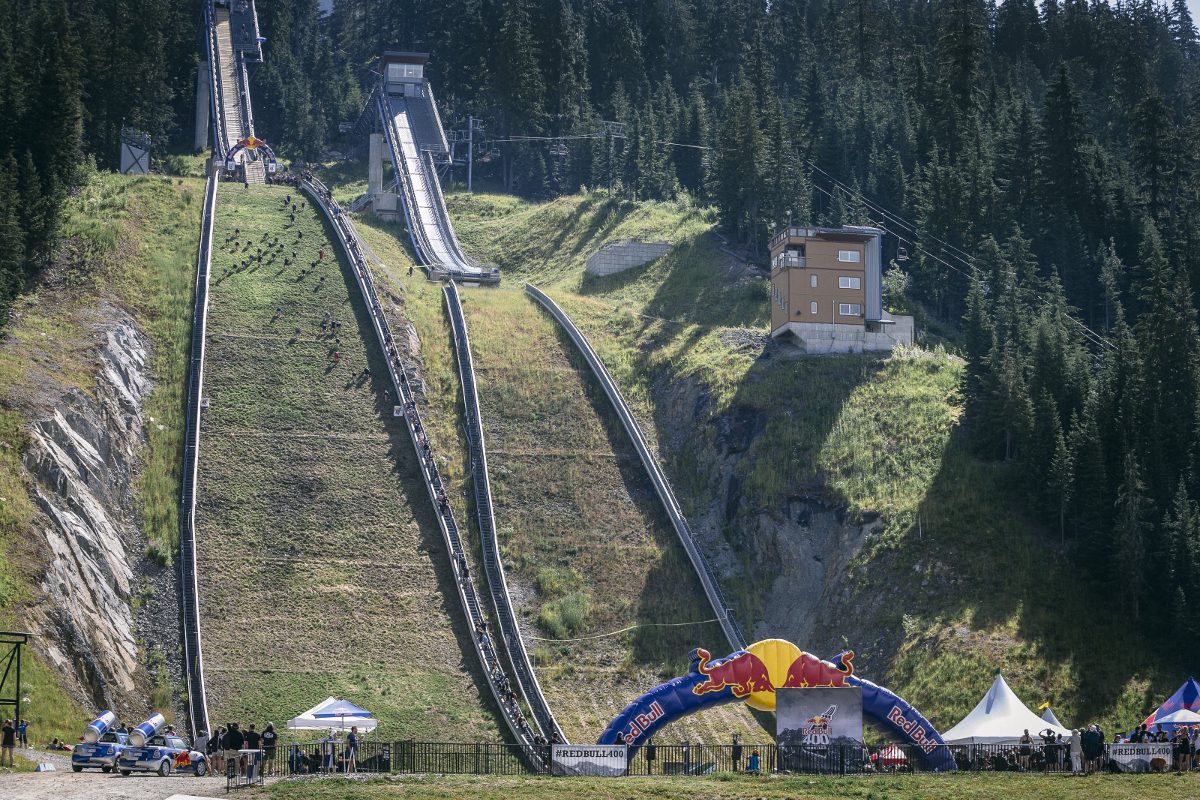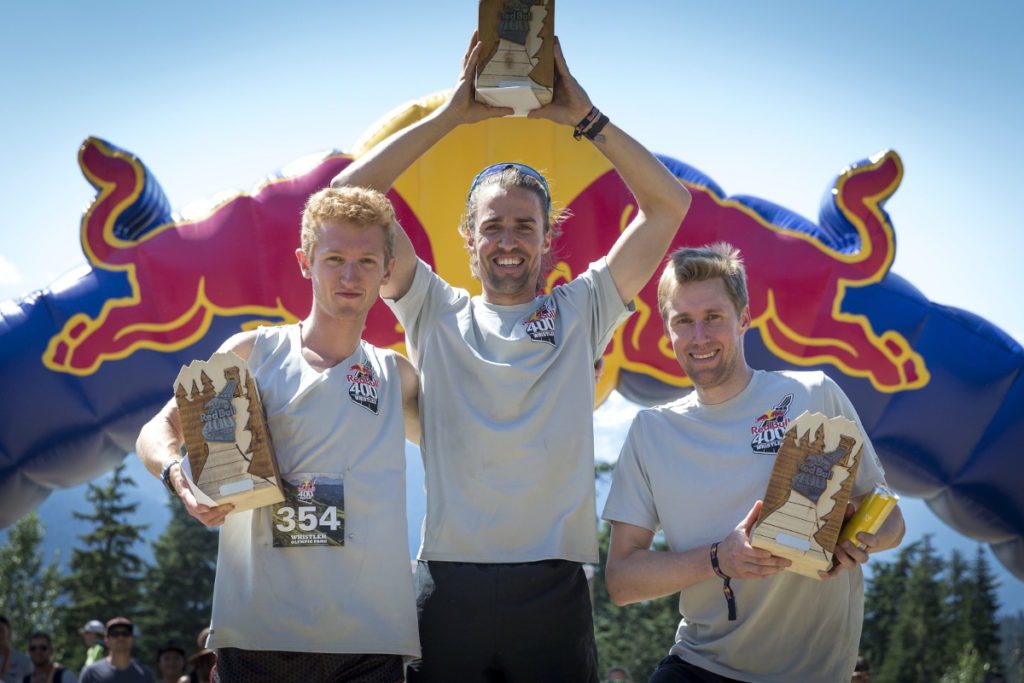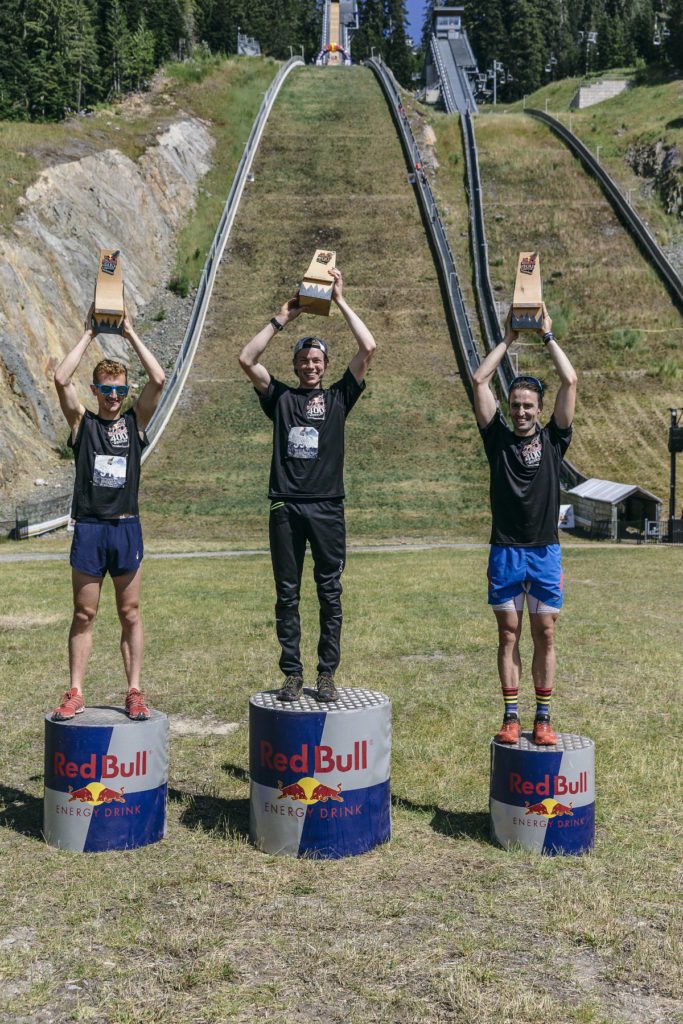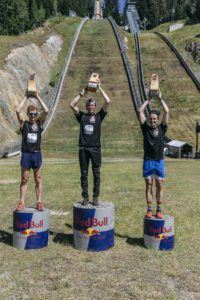If Shaun Stephens-Whale is to improve upon either his 2015 or 2016 results at the Red Bull 400 in Whistler, B.C., he will be the event’s champion.
The Roberts Creek, B.C. native has finished runner-up at the world’s steepest 400m at both editions of the uniquely-formatted event, a run-up of the ski jump at Whistler Olympic Park. He knows the event as well as anyone. He’s the only man to podium twice at the circuit stop in Whistler.
RELATED: The Red Bull 400 is Canada’s steepest (and perhaps most daring) sprint.
On Aug. 5, the stair climbing specialist and Canadian long distance mountain running champion will once again be a podium contender. Defending champion, Kieran Lumb, will not be racing meaning Stephens-Whale is the top returning runner from 2016. He’s been consistent time-wise in the final too. In 2015, he finished in 3:55. In 2016, he clocked 3:54.
RELATED: Pro triathlete Rachel McBride calls Red Bull 400 “One of most painful things I’ve ever done”.
Canadian Running caught up with Stephens-Whale after he returned from 100 Mile House in British Columbia where he spent weeks fighting wildfires in and around the evacuated town. He offered up some race hacks to be successful come race day. One recommendation is particularly interesting and most certainly one we will be using at the race that climbs 140m thanks to a 37 per cent average climb.
https://www.instagram.com/p/BW4HRGSFufx/
Don’t wear traditional racing flats
The first year Stephens-Whale did the event, he wore cross-country racing flats with minimal grip. He says, because at least half of the race is on grass, he was slipping and sliding– like two steps forward, one step back kind of thing. Last year, he wore trail running shoes, Inov-8 X-Talon 190s, which made a positive difference.
Walk backwards down the stairs post-race
One of Stephens-Whale’s most interesting suggestions is when the race is done, especially if it’s a qualifying heat and you are running the finals, descend down stairs while facing uphill. He says the stair climb down feels worse than stairs post-marathon.
No gloves
While some people, like 76-year-old Terry Byrne, wear gloves during the event, Stephens-Whale thinks they can be a hindrance because of the early grass section of the race.
Get accustomed to the pain
“I really recommend high intensity hill intervals,” he says. One-minute to 90 seconds of hill repeats. Alternatively, if you don’t have access to hills, resistance training on the bike will work. “Quad strength is important,” he adds.

Don’t get caught up in the start line excitement
The first 100m or so of the race are deceiving. It’s flat and runnable. “I remember in qualifying, everyone went out so hard that I wasn’t even close to the front,” he says. “It’s a long grind up that hill and you need to divvy up your energy.”
Don’t linger on the end-of-race mats too long
At the top of the ski jump, Stephens-Whale says there are high jump mat-like landing pads where finishers can collapse. If you’re near the front of your heat, make sure to allow room closest to the finish line so others behind have a place to fall (and not onto you).
Legs and arms like Jell-O is to be expected
Don’t be surprised or worried if your legs and/or arms feel like Jell-O by the end. It’s just a matter of time before the lactic acid sets in.
Try not to psyche yourself out
“I remember going into the final – I’ve never experience something like this before a race – and I was actually afraid of how much I was going to hurt,” he says. The UBC graduate adds that experience is unlike any other event, meaning a lot coming from a runner who has completed stair climbs, marathons, trail races and ultras.
Created in partnership with Red Bull




